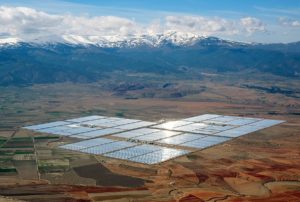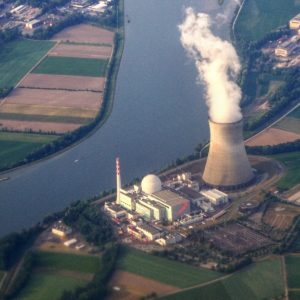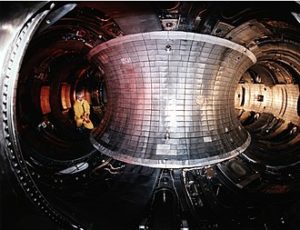Feature: Power Shift – Achieving A Clean Energy Future

Words: Matt Innes
Amid the pressure of rising costs and combatting global warming, the dream for many is to secure a clean, affordable, and sustainable source of energy.
From lighting our homes and streets to powering the vast server networks and supercomputers that we now depend upon, electricity is a vital and valuable commodity for humankind. Along with food and shelter, it seems a basic human right that people have access to a reliable power source wherever they live in the world.
Yet, the ever-increasing cost of electricity remains one of the key concerns for householders struggling to keep the lights on and a roof over their family’s heads. There is also the pressing environmental imperative of climate change and global warming furthering demand for alternative energy sources.
A power shift is occurring as new technologies vie for dominance in the volatile energy markets of the world, all trying to topple fossil fuel as the key provider.
It’s Not Easy Being Green
Green power has been touted as the way forward to solve the energy crisis – mainly solar and wind power as alternative sources. There is an overwhelming push for countries to convert from traditional fossil-fuelled facilities to green initiatives, replacing them with solar farms and wind turbines.
The drive for green and clean power is admirable, but the way in which it is being executed has been marred by political manoeuvrings, ideological populism and corporate strategy. While we were enamoured by the prospect of a green future, a hostile takeover occurred, and the global green movement was hijacked by commercial interests.
Now that it is popular and profitable, corporations have been more than willing to chase the green dollar. Meanwhile, they pat themselves on the back in fawning PR despatches and revel in how good it feels to be changing the world.
Keep in mind that these are the same companies that helped bring us to the brink in the first place. A report by UK think tank InfluenceMap found that 80% of the world’s greenhouse emissions are produced by just 57 fossil fuel companies. As fossil fuel becomes the energy source of the past, these companies are scrambling aboard the bandwagon to greenwash their public profile of historical environmental atrocities and boost their quarterly earnings in the process.
It’s become in the best interest of corporations and governments to be pro-green. But while solar and wind power have shown promising advances, the technology and infrastructure are not yet at the stage where it can supply reliable power. A base load is still required, which at this point is supplied by fossil fuel power.

The Nuclear Power Option
Nuclear power has been a troublesome issue in Australian politics and culture since the 1950s. There has always been strong opposition to nuclear power in Australia, owing in part to our large reserves of coal and natural gas, which is far more cost effective in terms of extraction and processing. There has also been intense resistance against uranium mining within the national counterculture and associated Greens political movement. Despite multiple attempts over the years by various governments and pro-nuclear advocates, there are still no nuclear power plants in Australia. Our sole nuclear facility is a laboratory in Sydney that produces medical radioisotopes and carries out research.
Nevertheless, Australia remains a major player in the global nuclear game, containing 33% of the world’s natural uranium deposits. We are the third-largest producer of uranium, following Kazakhstan and Canada. All of our uranium is exported.
Australia is simultaneously a key signatory of the Nuclear Non-Proliferation Treaty (NPT) in 1970, which was ratified by the Whitlam Government in 1973. Since then, it has been a fundamental part of forming Australia’s foreign policy and international attitude towards restricting nuclear weapons. As such, Australia maintains a delicate geopolitical balance between profiting from nuclear expansion while preserving its hard stance against the development of nuclear weaponry.
Proponents argue nuclear power can bring us to our net zero targets faster than green power given the process produces minimal harmful emissions compared to coal. Pursuing a nuclear future is both costly and time-consuming. It takes on average nearly nine and a half years to construct a working nuclear power facility compared to one to three years for wind and solar farms.
Another critical argument against nuclear power pertains to waste management and its impact on humans and the environment. Nuclear waste is highly hazardous and decays over a period of time, anywhere from a few hours to millions of years. The waste is stored for disposal in deep geological repositories, which is considered the best solution by global standards.
But no form of energy production exists without waste. For every kWh produced there is a human and environmental cost. According to the US Energy Information Administration equates that trade-off to 0.88 pounds of CO2 per kWh. Coal-fired power plants emit billions of tons of carbon dioxide into the atmosphere every year, along with producing substantial toxic and other hazardous waste from rare-earth mining required to extract required materials.
Once green power infrastructure becomes obsolete or inoperable, few of the components involved in its construction can be suitably salvaged, recycled or disposed of with deference to the environment. There are also a number of toxic metals and hazardous materials such as oil and fibreglass involved in the construction and maintenance of wind and solar technology. The decommissioned blades of wind turbines, composed of fibreglass-reinforced polyester or epoxy, are buried in mass graves. Although there are ongoing developments in recycling and repurposing these parts, it is a costly and labour-intensive process.

Harnessing Star Power
In our decades-long search for clean and sustainable energy, an answer may have been found within the stars. Nuclear fusion is the energy that powers the Sun and can potentially produce vast amounts of energy without heating up the atmosphere or producing long-term nuclear waste.
A recent experiment at UK-based JET Laboratory resulted in a major breakthrough in the field, producing more energy than ever before. While the technology is still decades away from commercial viability, it is a promising step toward a clean and affordable energy source for the world.
Modern nuclear reactors produce energy using a process of fission, which splits atoms apart. Fusion seeks to combine the atoms by heating the hydrogen gas to temperatures exceeding 100 million degrees Celsius. Ideally, this process of bonding atoms results in the production of 10 million times more power than other chemical reactions like fossil fuel. With zero carbon emissions and no radioactive waste produced, new fusion technology is being hailed as the new hope for a truly clean energy future.
It also provides a convenient pivot point for traditional fossil fuel companies like Shell and Chevron, both of which have invested billions into new fusion research, to transition into a new era of power generation and distribution. Microsoft has also heavily invested in nuclear fusion projects and development, signalling that control over supply and affordability is set to remain in the hands of global corporate powers.
The power shift presents a rare opportunity to create meaningful global change on an unprecedented scale. If fossil fuel is to be truly phased out, it will be a long and slow transition with many unknowns and challenges to overcome in the process. The ultimate solution is less likely to be a singular power source than a hybrid of multiple alternative sources contributing to a stable grid. Given new fusion technology won’t be economically competitive in the energy market until 2050, the next few decades will be critical in managing our future and determining how we live for generations to come.
‘Become What You Are’, the new album from The Daisycutters is available now via MADCAP Global Music, JB Hi-Fi and independent music retailers.
